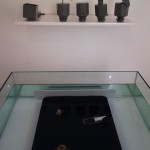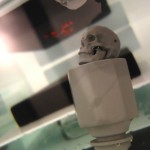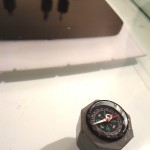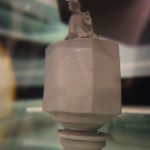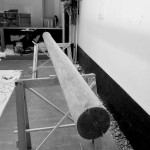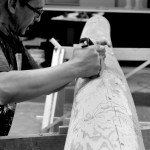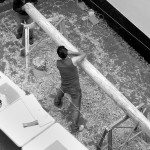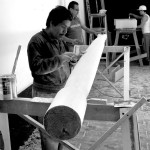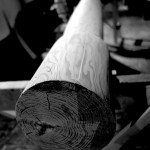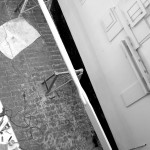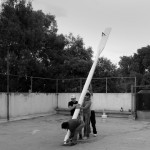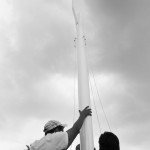Per Huttner presents his first solo exhibition in Mexico in collaboration with Alam + Petrov, The City of Mexico and the Embassy of Sweden. For the project Poseidon Recreates Lake Texcoco, at Villa Punk, he reflects on the relationship between security, risk-taking, travel and the relationship between Western and Amerindian culture. He makes use of the unique situation of having a gallery in a hotel and takes his starting point in Homer’s Odyssey and James Joyce’s Ulysses. Odysseus returned from his voyages such a changed man that not even his wife recognised him.
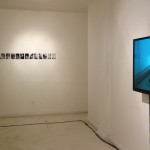
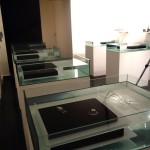
Any journey constitutes a wish for change in our lives and possibly how we see reality. The visitors to the gallery are therefore invited to enter into a secret space where only one person can enter at the time. The guest is asked to make an incantation or a wish how he/she wants to change inside the room (see video below). Inside the room there are six pools that are inspired by the work of fellow Swede Öyvind Fahlström’s “Green Pool” (1968-69). Fahlström was born in Brazil and spent his first ten years there. In the piece he draws from Amerindian perspectivism and the concept of Wayob by mixing images of wild cats with violent military imagery, underling the violence that is often the outcome when man releases his animal self or the reverse. In Huttner’s version the pools correspond to six key characters in the Odyssey, blended in with clear Mexican references. The pools serve to give power to the guest’s wish.
Huttner also reshaped an electric pole into a giant oar that is placed vertically on the roof of the hotel. The pole alludes to the Winnowing Oar of the Odyssey. In the underworld Odysseus was told by Teresias, the soothsayer that he would eventually return to his home at Ithaca. The hero was further instructed when he came home to take an oar from his ship and to walk inland until he finds people who know nothing of the sea, where the oar will be mistaken for an agricultural instrument. At this point, he is to offer a sacrifice to Poseidon, and then at last his journeys would be over.
The artist has a deep fascination for this kind of use of objects where a secondary use is introduced. The work connects back to his installation at the Museum of Time in 2009 where the entire exhibition focused on misuse or the invention of new uses of objects functional objects. In the formal shaping of the oar Huttner takes formal inspiration from the Swiss-Brazilian artist Mira Schendel, who investigated related questions in her work. Here Huttner paraphrases a series entitled Sarrafos (1987), where Schendel add big black wooden beams on monochrome white paintings “their surfaces address the limits between the body, the surface of the painting and the viewer’s space.” By going against traditional ideas of painting she opens new horizons for the body, the spectator, movement and their interaction with the artwork.
Parallel to the installation work, Hüttner creates a performance on the same theme will Jean-Louis Huhta/Dungeon Acid. Poseidon Recreates Lake Texcoco forms the second part of the Schendel-Fahlström Institute for Research, where the first part was realized at MAM in Sao Paulo in October 2013.

